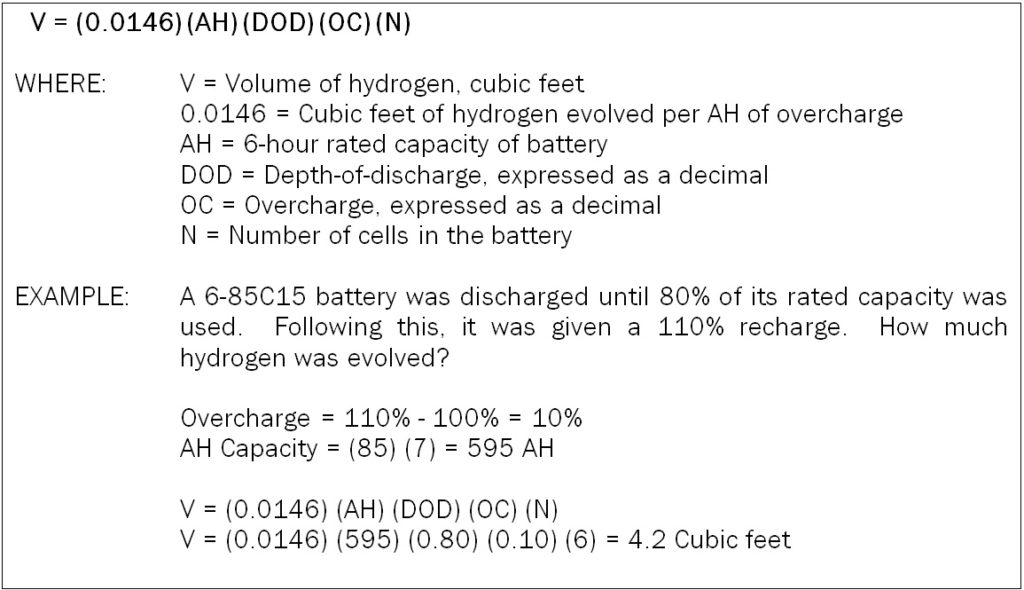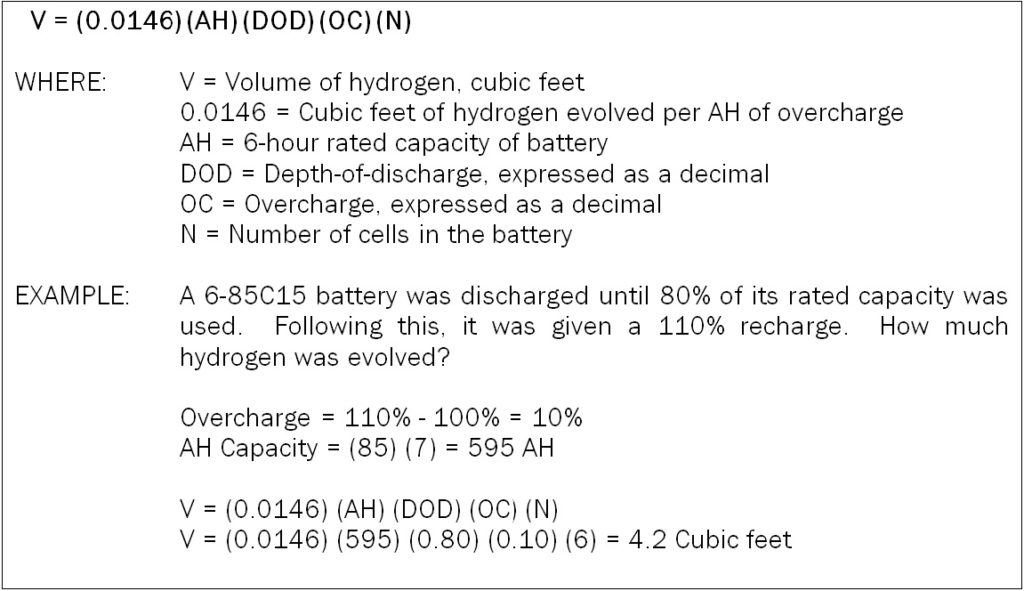The Occupational Health and Safety Act (OHSA)’s regulations for battery charging and maintenance outline strict requirements that each battery room be equipped with adequate ventilation “to ensure diffusion of the gases from the battery and to prevent the accumulation of an explosive mixture.”
But Why?
Every lead-acid motive-power battery will produce hydrogen gas and other fumes once it reaches the 80% charge point. Hydrogen gas is a known asphyxiate, and can be fatal in high enough doses.
In addition, hydrogen gas can form explosive and flammable mixtures with air if concentrations reach 4% or higher. Hydrogen gas is both odourless and colourless, making it even more hazardous because of its undetectable nature. And because it is lighter than air, it can rise to the top of the warehouse structure and accumulate if no ventilation is present.
So how can you make sure your battery room is kept safe from the dangers of hydrogen gas? Here are a few things to always remember:
- A hydrogen gas detector should be present and able to detect hydrogen gas concentration in the air of at least 1% by volume (10,000 ppm).
- Prevent sparks, flames and electrical arcs in the battery charging room to minimize danger, and post no smoking signs.
- Never handle a battery if the battery room’s ventilation system is damaged or isn’t operating properly.
- Truck battery compartment cover and/or battery tray cover should be open to provide adequate airflow across the battery.
- All battery rooms should keep batteries safe from falling items and dirt. Both can damage the forklift batteries and compromise the safety of personnel.
- The ventilating system in a charging room should conform to local codes and ordinances.
The Institute of Electrical and Electronics Engineers (IEEE) has created a formula to help calculate the amount of time it will take to completely ventilate the air within a battery room. It’s imperative to use this formula to help understand how much ventilation your battery room will need.

On occasion, you may wish to know the total volume of hydrogen produced during one recharge of his battery.
In that case, use the formula below:

When these precautions and preventive measures are taken, the battery room, as well as all personnel, can be kept safe from the highly hazardous nature of hydrogen gas.

